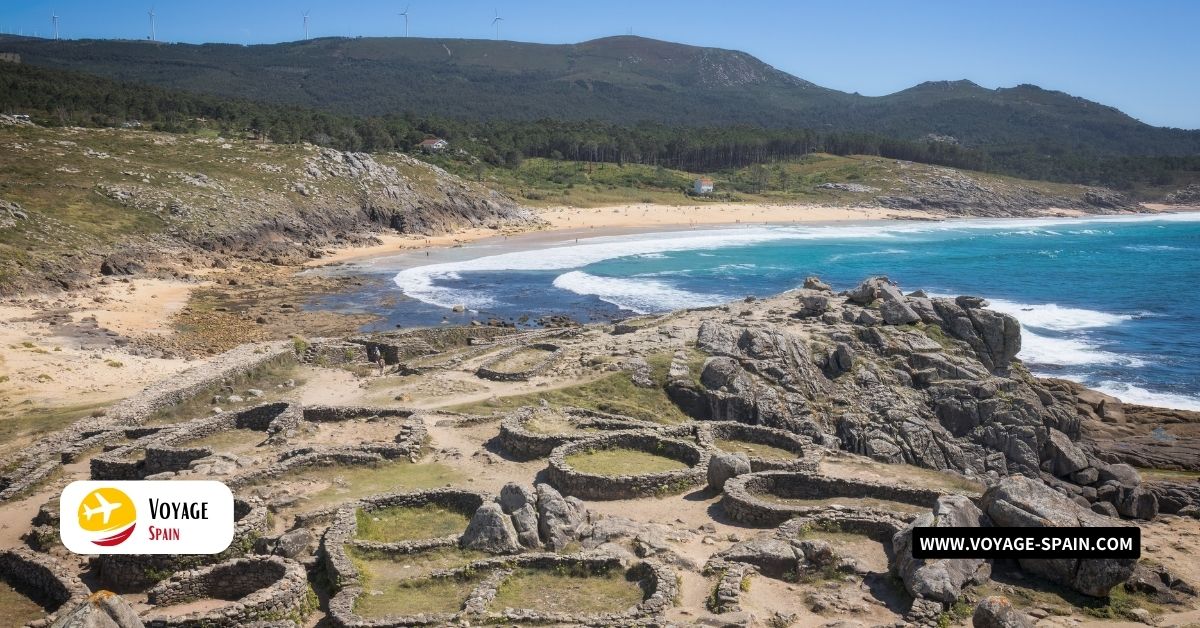Introduction
Spain is home to several eagle species, each with its unique place in the ecosystem. The Spanish Imperial Eagle, Golden Eagle, and Bonelli’s Eagle, among others, contribute to the balance of nature. Their presence helps control populations of smaller animals, maintaining a healthy and diverse habitat. Yet, despite their importance, these magnificent birds face significant challenges. Habitat loss, poisoning, and human encroachment threaten their existence.
The Eagles of Spain
Spain’s skies are a stage for some of the most awe-inspiring aerial performers. Eagles, with their commanding presence, reign supreme. They’re not just birds; they’re symbols of freedom and strength. Let’s dive into the diverse cast of eagle species that call Spain their home and the landscapes they dominate.
- Spanish Imperial Eagle: A rare sight, this majestic bird prefers the open woodlands of southwestern Spain. It’s a symbol of national wildlife conservation.
- Golden Eagle: Soaring high in the mountain ranges, the Golden Eagle claims the rugged terrains and high altitudes as its domain, from the Pyrenees to Andalucía.
- Bonelli’s Eagle: Thriving in rocky, rugged landscapes, this eagle finds solace in the cliffs and crags of Spain’s eastern and southern regions.
- Booted Eagle: A versatile resident, the Booted Eagle enjoys a variety of habitats, from dense forests to open marshlands, primarily in the warmer southern parts.
Ecological Significance
Eagles are not just spectacular to watch; they play a critical role in maintaining the balance of nature. As apex predators, they’re at the top of the food chain, shaping the ecosystems in ways only nature’s finest can. Here’s how these majestic birds contribute to the health and diversity of their habitats.
- Apex Predators: Eagles help keep other animal populations in check. This natural population control ensures a balanced ecosystem.
- Scavengers: They also act as cleaners. By consuming carrion, they prevent the spread of disease.
- Indicator Species: Eagles reflect the health of their environment. A thriving population indicates a healthy ecosystem.
- Seed Dispersal: Although not their main role, eagles indirectly aid in seed dispersal. The prey they drop can contribute to spreading seeds across different areas.
- Nutrient Cycling: Eagles play a role in nutrient cycling by transporting nutrients through their consumption and redistribution of prey. This process enriches the soil and supports plant growth.
- Regulating Behavior: As apex predators, eagles influence the behavior of other species within their ecosystem. Their presence can deter certain animals from overgrazing or overexploiting resources, thereby promoting a more sustainable balance.
- Top-Down Control: By exerting top-down control on prey populations, eagles indirectly affect lower trophic levels, which in turn can have cascading effects throughout the entire food web.
- Habitat Engineering: Eagles, through their nesting and foraging behaviors, shape their habitats. Their nests provide shelter for various organisms, while their foraging activities can create openings in forests, promoting habitat diversity.
- Cultural Significance: Beyond their ecological roles, eagles hold cultural significance for many communities. Their presence in folklore, mythology, and traditions reinforces the interconnectedness between humans and the natural world, fostering a deeper appreciation for biodiversity conservation.
Threats to Survival
While eagles dominate the skies, they face significant challenges on the ground. Human activities and natural obstacles test their resilience every day. Understanding these threats is the first step toward safeguarding the future of Spain’s majestic eagles.
- Habitat Destruction: Urban expansion and forestry practices reduce the spaces where eagles can thrive.
- Poisoning: Pesticides used in farming can accumulate in eagles, leading to fatal outcomes.
- Collisions with Wind Turbines: The rise of renewable energy isn’t all positive. Eagles often collide with wind turbines.
- Climate Change: Shifts in climate alter habitats and food availability, forcing eagles to adapt or move.
- Competition for Food: Eagles face competition from other predators. This competition grows as their habitats shrink.
Conservation Efforts
Preserving the splendor of Spain’s eagles requires concerted efforts from conservationists, policymakers, and communities alike. Fortunately, there’s no shortage of initiatives aimed at safeguarding these majestic birds and their habitats. Let’s take a closer look at the ongoing conservation endeavors.
Legal Protections
Spain boasts robust legal frameworks to shield its eagle populations. National and EU-wide legislation impose strict penalties for harming or disturbing these birds, providing them with legal protection.
Conservation Programs
From breeding programs to habitat restoration projects, numerous initiatives are in place to support eagle populations. These programs focus on bolstering breeding success, restoring degraded habitats, and raising public awareness about the importance of eagle conservation.
Success Stories
Conservation efforts have borne fruit, with notable increases in eagle populations across Spain. Through collaborative conservation endeavors, populations of species like the Spanish Imperial Eagle have seen significant recoveries, offering hope for the future of these magnificent birds.
Monitoring and Research
Continuous monitoring and research efforts are essential for understanding eagle populations, their behaviors, and the threats they face. This information helps guide conservation strategies and adapt management practices accordingly.
Community Engagement
Involving local communities in eagle conservation efforts is crucial for fostering stewardship and garnering support for protective measures. Community-based initiatives can include educational programs, ecotourism opportunities, and collaboration with local stakeholders.
International Collaboration
Given the migratory nature of some eagle species and the transboundary nature of conservation challenges, international collaboration is vital. Spain participates in various international agreements and partnerships focused on eagle conservation, sharing knowledge, resources, and best practices with neighboring countries and beyond.
Mitigating Human-Wildlife Conflict
Addressing conflicts between eagles and human activities, such as agriculture, forestry, and infrastructure development, is essential for reducing negative interactions and ensuring coexistence. Strategies may include implementing measures to prevent eagle collisions with wind turbines, promoting sustainable land use practices, and providing compensation for livestock losses due to eagle predation.
How You Can Help
You don’t need wings to make a difference in eagle conservation. Whether you’re a wildlife enthusiast or simply appreciate the majesty of these birds, there are plenty of ways you can lend a hand in protecting Spain’s eagle populations. Here are some simple yet impactful ways to get involved:
Supporting Conservation
Consider making a donation to reputable conservation organizations dedicated to eagle conservation efforts. Your contributions can fund vital research, habitat restoration projects, and conservation programs aimed at safeguarding these iconic birds. If monetary donations aren’t feasible, volunteer your time and skills to assist with fieldwork, public outreach events, or administrative tasks.
Responsible Tourism
When planning your next adventure, opt for eco-friendly and responsible wildlife tourism practices that prioritize the well-being of eagles and their habitats. Choose tour operators and accommodations that adhere to sustainable tourism principles and support local communities. Respect wildlife viewing guidelines and keep a safe distance from nesting sites to minimize disturbance to eagles and their environments. By promoting responsible tourism, you can help ensure that eagle-watching experiences remain enjoyable and sustainable for future generations.
Conclusion
Spain’s majestic eagles are more than just birds; they’re an integral part of the country’s natural and cultural heritage. Preserving these iconic species isn’t just about protecting biodiversity; it’s about safeguarding the soul of Spain. From the rugged mountains to the sweeping plains, eagles symbolize the wild spirit and untamed beauty of the Spanish landscape.
But the future of Spain’s eagles hangs in the balance, facing threats from habitat loss, human activities, and climate change. Now, more than ever, it’s crucial for each of us to play a role in their conservation. Whether it’s supporting local conservation organizations, advocating for stronger environmental protections, or simply spreading awareness about the importance of eagle conservation, every action counts. Together, let’s ensure that Spain’s skies remain filled with the soaring grace of these magnificent birds for generations to come.
FAQs
Q1: What Is The Eagle On The Spanish Flag?
The eagle on the Spanish flag is the Golden Eagle (Aquila chrysaetos).
Q2: What Is Spain’s Most Important Natural Resource?
Spain’s most important natural resources include fertile land for agriculture, minerals such as iron ore, and renewable energy sources like solar and wind power.
Q3: How Many Eagles Are In Spain?
There are several species of eagles in Spain, including the Spanish Imperial Eagle, Golden Eagle, Bonelli’s Eagle, and Booted Eagle. Population numbers vary for each species and are subject to ongoing conservation efforts.
Q4: What Are The Characteristics Of The Spanish Imperial Eagle?
The Spanish Imperial Eagle (Aquila adalberti) is a large raptor with a wingspan of about 1.8 meters. It has dark brown plumage, a distinctive white patch on its shoulders, and a hooked beak. It primarily inhabits open woodland areas and feeds on small mammals and birds.
Q5: What Do Spanish Eagles Eat?
Spanish eagles are apex predators and feed primarily on small mammals such as rabbits, rodents, and birds. They may also scavenge on carrion when necessary.
Q6: What Is Spain’s Conservation Efforts?
Spain has implemented various conservation efforts to protect its eagle populations, including legal protections through national and EU-wide legislation, conservation programs focused on habitat restoration and breeding initiatives.












